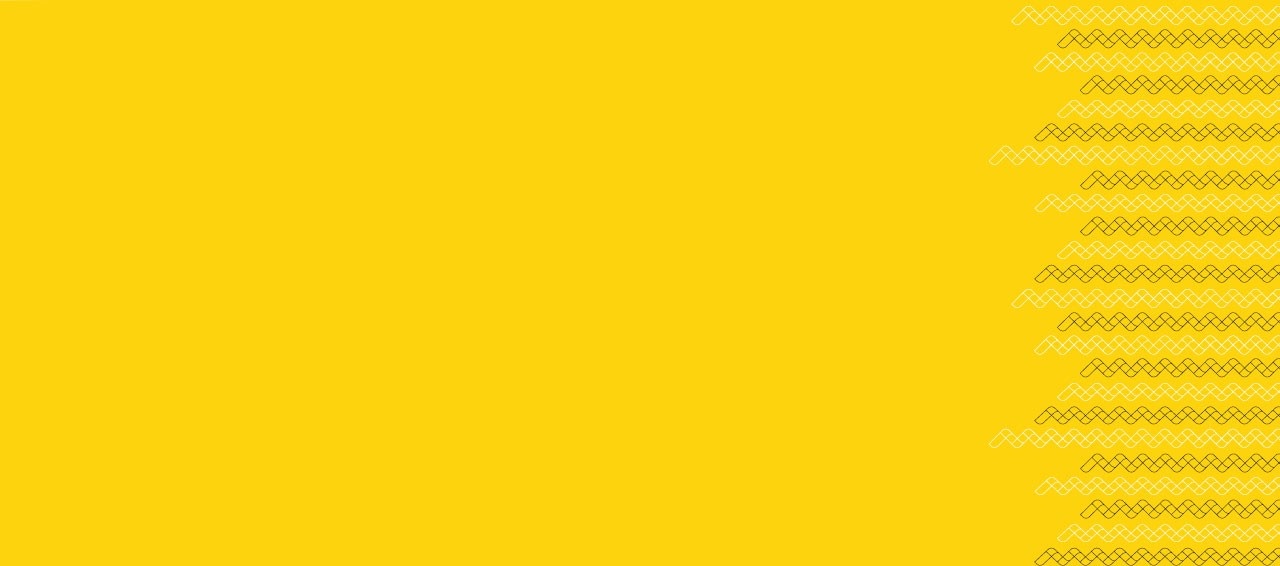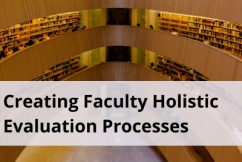Evidence from Self
Reflections on your teaching and evidence thereof is an important part of Holistic Evaluation of Teaching. According to the policy, the contribution of evidence from self (along with evidence from students and peers) should be organized and narrated through the instrument of the Teaching Dossier.
Evidence of teaching effectiveness from self “...can include, but is not limited to, a teaching philosophy statement, evidence of engagement in teaching and learning professional development, examples of effective course and assessment design, educational service or leadership, and evidence of research and evaluation on teaching and learning (including peer-reviewed research and scholarship of teaching and learning).”
The dossier
While the dossier is the central instrument through which to present an organized description of your teaching, it is also, in itself, a form of evidence. A dossier typically consists of the main document (8-10 pages in length) and its appendices. The appendices can be much longer, depending on the length of your career and the breath of evidence you are including. Within the main body of the dossier, you have the opportunity to narrate, reflect and contextualize your life in teaching, and to expand on point-form items in your CV. For example, a dossier typically includes a section on teaching responsibilities. Rather than listing these, describe them according to the statements or principles you hold in your teaching philosophy and the means by which you enable students to meet learning outcomes.
It is important that your teaching beliefs, descriptions of teaching activities, and the evidence of teaching effectiveness are clearly aligned and articulated. Creating a coherently written and easily navigable dossier with a , well-considered headings and sub-headings, while cross-referencing descriptions and appendices with (where allowed) will help your readers fully immerse themselves into the breadth and depth of your teaching (Trevitt & Stocks, 2012).
In addition to a teaching philosophy, the dossier might include sections such as: summary of teaching responsibilities, development of teaching materials, efforts to improve teaching, and information from students and peers. The appendices allow you to expand on and provide documentation to support the main body of the dossier. It may include, for example, sample course syllabi and teaching materials, complete student evaluation reports, peer review of teaching documents, letters of reference, and/or publications on teaching and learning. For examples of what a dossier might look like, see the Guides, Rubrics & Templates page.
Teaching philosophy
Simply put, a teaching philosophy is a description of what you believe about teaching and what you believe about learning. These beliefs should be interconnected with one another. It is helpful for your readers if you put statements about your beliefs in the context of your own discipline and courses. Teaching philosophies may be stand-alone documents, but they are often presented at the beginning of a teaching dossier. It introduces the reader to your goals and values in teaching, how to enact these in practice, and provides the context in which to place the rest of your dossier.
Remember when writing your teaching philosophy, you are tasked with both reflecting on your approaches and demonstrating your commitment to teaching and learning. In one to two pages, use a personal and specific voice in these statements, and avoid generalized expressions of what you guess might be expected (Trevitt & Stocks, 2012). Consider the priorities of the context in which you teach, including your discipline context. What are the goals of your program or Faculty? What are your thoughts on equity, diversity, inclusion and accessibility? What are your thoughts on sustainability, resilience, or other personal values, theories, or methodologies that you bring to your teaching? Your teaching philosophy will evolve over time, based on your experiences, personal reflections, and your continuing development. Re-visit it from time to time to ensure it continues to represent your current views about teaching and learning.
Integrating evidence with self-reflection
Drafting your dossier will, necessarily, move you to reflect on your teaching. Self-reflection is a tool for personal professional development, as well as an important component in the holistic evaluation of teaching. Self-reflection is a type of meta-cognition with which faculty and instructors develop their teaching practice (Wlodarsky, 2018). Deliberate and purposeful reflection on past experiences can identify assumptions, errors, challenges, and successes. Combing through your memories may raise questions and suggest potential alternatives for updating and revising your approach to teaching practice (Booke & Willment, 2017). Self-reflection is the basis for most trial-and-error individual improvements to teaching over time, and reflection is vital for processing lessons learned in professional development and integrating those in teaching and learning (Buckridge, 2008).
Self-reflection, when made intentional and explicit (e.g. in writing), and focused on a specific context with improvement goals in mind, can become artifacts to present in a dossier—reflections become evidence of effective teaching (Chalmers & Hunt, 2016). As you draft your teaching philosophy and narrative descriptions of aspects of teaching, reflect on the ways in which you carry out your beliefs about teaching and learning in your practice. For example, in what ways do your course designs, assignments, or student interactions match up with your stated beliefs? The answers to this question will form the basis for some of the most important content in your teaching dossier, and give you a general idea of the most relevant pieces of evidence from self, students, and peers to draw upon, as you narrate the sections of your dossier and add to the appendices.
For example, as a section of the dossier, reflections on student feedback include your responses to the data from students. You may describe how you respond (or plan to respond) to trends. If you revised some aspect of a course, based on a trend you identified in student feedback, mention in your dossier how and why you decided to make a change. Not all student evaluations or comments require changing your practice. For example, you may find that a single student leaves harsh comments that are not in line with feedback from the majority of students. For more information on how to address student feedback in a dossier, including negative comments, review "Tips for Including Student Feedback in a Dossier" in the Evidence from Students section.
In the context of a holistic evaluation of teaching, this is "evidence from self" and, further, as you gather and consider other pieces of evidence from peers and students, you'll put all three types of evidences in conversation with each other. Triangulate, or cross-reference, them to articulate the breadth and depth of your teaching practice and development. Returning to the example above about reflecting on trends in student feedback, triangulating student evidence with other evidence might mean including a summary of an instance of peer review, in which you sought out a peer to brainstorm about possible solutions and to then observe that solution in action. Or, you might include reflective memos made before, during and after a first and second iteration of a course, thereby augmenting the reader's understanding of SLEQ data (Chalmers & Hunt, 2016).
To aid self-reflection on various dimensions of teaching, consider consulting the Rubric for Evaluating Teaching in Guides, Rubrics & Templates.
Course and assessment design
Your involvement in course and assessment (re)design is also an example of evidence from self. It demonstrates the steps you have taken to improve student learning and may include things like improving class climate, adjusting course content, trying different teaching methods, or a complete redesign of a course structure. Documenting the steps you have taken to (1) assess your courses including soliciting feedback, (2) implement changes, and (3) evaluate the effectiveness of those changes is important.
Professional development in teaching and learning
Dalhousie and your Faculty are interested in more than just your past accomplishments. They will want to see evidence to support your potential and your growth as an instructor. In your teaching dossier, describe your efforts to improve your teaching knowledge and practice, including participation in teaching-related workshops, seminars, and conferences, courses you have taken, engagement in Communities of Practice (CoP), and any reading you’ve undertaken. This evidence will be strengthened by briefly reflecting on the ways in which you have enacted (or plan to enact) what you have learned, rather than just listing your attendance.
The Centre for Learning and Teaching offers a number of professional development opportunities throughout the year and maintains a collection of teaching and learning resources through their CLT library and LibGuides.
Educational leadership and service
Early-career instructors may not yet have educational leadership experiences to add to a teaching dossier. However, it is good to be aware of opportunities for pedagogical service as a way to be involved in and contribute to teaching and program development in your department. For example, some ways you can become involved in educational service would be to: join a curriculum development committee, contribute to a program review, sit on teaching award and/or teaching and learning grant committees, lead a book club about pedagogical practice, or offer a brief lunch-and-learn presentation to your colleagues about a teaching method you employ.
Educational leadership can take many forms and have different styles; it will be specific to your own career and context. Some people find that quietly mentoring colleagues or guiding change from within a leadership team is a better fit, while others contribute to educational leadership by taking on formal administrative roles as Chairs, Department Heads, or Deans, doing and supporting others innovative and reflective teaching in that way. Others will contribute to knowledge creation through pedagogical research, writing, and presentations.
Scholarship of Teaching and Learning (SoTL) and professional contributions
The scholarship of teaching and learning (SoTL) involves systematically exploring and analyzing teaching and learning through research questions and the use of multiple forms of evidence— from students, peers, and your own reflections. Unlike scholarly teaching, which ultimately focuses on the improvement of your own teaching practice, SoTL actively seeks to share your work to inform the practice of others both within and beyond your discipline (e.g. via conference presentations and publication). Engaging in scholarly teaching often provides a door into the SoTL process, as it can lead to questions about your teaching that you would like to explore through the systematic and scholarly mechanisms of SoTL. Presenting your contributions to SoTL may include summaries of key research projects (in progress or completed), a listing of conference presentations and papers, and an outline of internal and external teaching development grants and awards that you have received. If you have published book chapters, journal articles, or workbooks or lab manuals, these should also be included in your dossier as professional contributions.
The CLT holds an annual series of workshops on SoTL, open to all, and part of the SoTL Scholars Program. We also hold regular SoTL Brownbag Lunches to informally explore topics and issues related to SoTL. Visit these pages to learn more about engaging in SoTL and what resources exist at the Centre for Learning and Teaching.
References
Booke, J., & Willment, J. A. H. (2017). Reflections on statements of teaching across faculty career phases. Transformative Dialogues: Teaching and Learning Journal, 10(1).
Brookfield, S. (2017). Becoming a Critically Reflective Teacher. (2nd ed.). New York, NY : John Wiley & Sons, Inc.
Buckridge, M. (2008). Teaching portfolios: Their role in teaching and learning policy. International Journal for Academic Development, 13(2), 117-127.
Chalmers, D., & Hunt, L. (2016). Evaluation of teaching. HERDSA Review of Higher Education, 3, 25-55. Retrieved from:
Focus on Formative Feedback for Teaching Development. (n.d.). Taylor Institute for Teaching and Learning. Retrieved December 22, 2021, from
A Guide to Providing Evidence of Teaching. (n.d.). Retrieved December 22, 2021, from
Trevitt, C., & Stocks, C. (2012). Signifying authenticity in academic practice: A framework for better understanding and harnessing portfolio assessment. Assessment & Evaluation in Higher Education, 37(2), 245–257.
Wlodarsky, R. (2018). A structured model for reflective adult learning among university faculty. Journal of Higher Education Theory and Practice, 18(5), 98–111.

